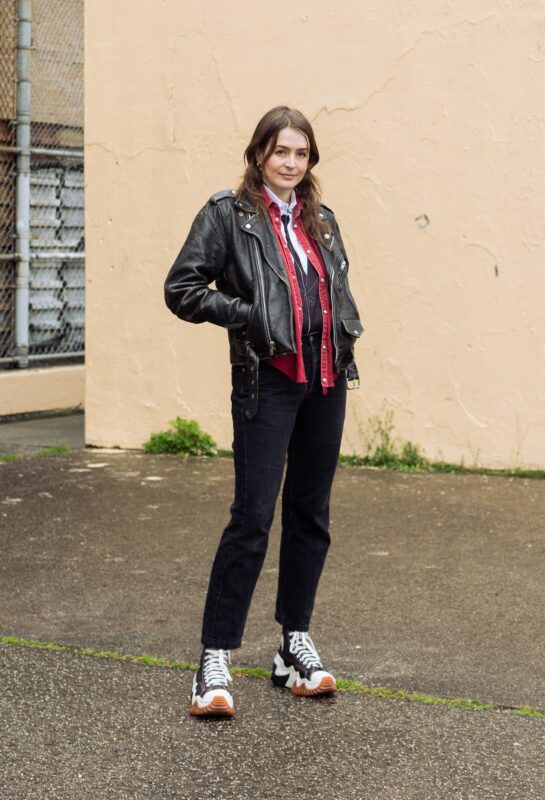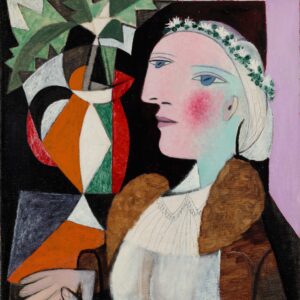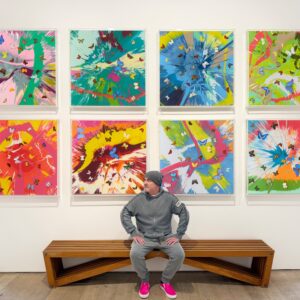I got my sex change 16 years ago at 21 years old. My art deals with the body because I inhabit one. I have no shame in being eccentric, in fact, it’s given me the power and guts to do whatever I want. I lost my inhibitions early and my desire to fit into society. Why crave acceptance from people you don’t even like? I do what I want when I want and that is my freedom in being an artist living underground. Fuck judgment.
Greer Lankton, 1996

Company Gallery is to present DOLL PARTY, an exhibition of works by the seminal, multi-disciplinary artist, Greer Lankton (1958-1996), organized in collaboration with the Greer Lankton Archives Museum (G.L.A.M.)
The presentation pays homage to the ethos of this great cultural icon in photographs, polaroids, and sculptures which were made in the 1980s when she lived and worked in the East Village with her husband, Paul Monroe. In 1984, Monroe gave Lankton her first solo show at his boutique EINSTEINS which proved so successful that two years later, she opened her own gallery in the shop called THE DOLL CLUB. In addition to showing works in the gallery, Lankton would also use the window of the store to create displays which expressed her delights and concerns. Having lost 36 friends in a two-year period to AIDS, Lankton created several installations that forced people to face the ongoing effects that the crisis had on their community. The window also introduced passerby’s to the doll Sissy, one the most recognized artworks by Lankton, who underwent the same sexual reassignment surgery as the artist.
Lankton is perhaps best known for her fully realized fabric dolls which she would animate and then photograph in tableaus of glamor, humor, pain, and decay. She explored and exploited celebrity, popular advertisement, and the downtown New York club-scene as tools to depict personal narrative. Her challenging views on gender and sexuality guided her in creating a prolific body of work that was alluring, confrontational and obsessive. Employing both high and low-brow aesthetics, her dolls often functioned as autobiographical figures to illustrate the range and gravity through which she navigated the complicated relationship she had with her own body.

Digital C-print
Her interest in the grandeur of fame is illustrated in the photographs of her dolls portraying notable icons, including trans model Teri Toye, performance artist Ethyl Eichelberger, drag star Divine, and legend Candy Darling. Here we see Lankton’s sculptures in repose and in action, at times performing for a public and at other moments in interior settings among intimate belongings. When the facade of the limelight wears off, we are met with more unsettling depictions of the body in flux. With a unique attention to anatomy, Lankton worked on her dolls with the grace of a surgeon; fragmented body parts become mementos held in states of vulnerability, decomposition, and radical transformation. Lankton was particularly drawn to the belly button, pulling from her own experience, having undergone naval surgery which enhanced her belly button to appear deeper. She even provided a service at EINSTEINS where you could bring in your childhood stuffed animal and she would give it an innie or an outie for a fee.
Although more widely known for her sculptures, Lankton always included a portfolio of photographs and installations in her solo shows. For the first time in an exhibition highlighting her career, COMPANYwill give a particular focus to this facet of her practice. Together the works on view celebrate the wide breadth of human experience which Lankton so charmingly captures in her artworks. While the exhibition only features a small fraction that made up Lankton’s rich artistic output, the hope is that it will illustrate the depth of her exuberant persona and the importance that her legacy has left.
Greer Lankton, DOLL PARTY, October 29 – December 3, 2022, Opening Reception: Saturday, October 29, 6 – 8 PM (Gallery 3) COMPANY 145 Elizabeth Street
About the artist
Greer Lankton (1958-1996) was born in Flint, Michigan. She studied Fabrics at the Art Institute of Chicago (1975-1978) and received a BFA from Pratt Institute in Brooklyn in 1981. After relocating to Chicago in 1991 she continued her robust career, including her participation in the Whitney Biennial, New York, followed by the presentation of her work in the Venice Biennial, both in 1995. She is the first trans artist ever to be exhibited at the National Gallery in Washington, D.C, the Metropolitan Museum of Art, The Whitney, LACMA, and the list keeps growing as she opens the door for future possibilities.
Recent notable group shows include ART AFTER STONEWALL, 1969-1989 at the Leslie Lohman Museum, 2019, Like life: sculpture, color, and the body at the Met Breuer, 2018, Outliers and American Vanguard Art, curated by Lynn Cooke, exhibited at the National Gallery of Art, Washington D.C, and the High Museum of Art, Atlanta, both in 2018 and at the LACMA, Los Angeles, CA, 2018-2019, Gay Gotham: Art and Underground Culture at the Museum of the City of New York, 2016, and EAST VILLAGE USA at the New Museum, NY, 2004-2005. In 2011 the ONE National Gay and Lesbian Archives in Los Angles, presented the first retrospective of Lankton’s work titled, Greer Lankton: You Can’t Throw it Away, organized by Paul Monroe and the Greer Lankton Archives Museum (G.L.A.M.). And in 2014 Participant Inc, New York, presented the first major exhibition of Lankton’s work in New York since her passing, titled Greer Lankton, LOVE ME, also organized in cooperation with G.L.A.M.. Lankton’s works are included in several significant private and public collections including The Costume Institute at The Metropolitan Museum of Art, New York, NY and The Art Institute of Chicago, Chicago, IL.
A lot has happened in both art and gender politics since then. After two decades under the radar, Lankton is now, in some sense, a prophet come home.
Holland Cotter, The New York Times, 2015







